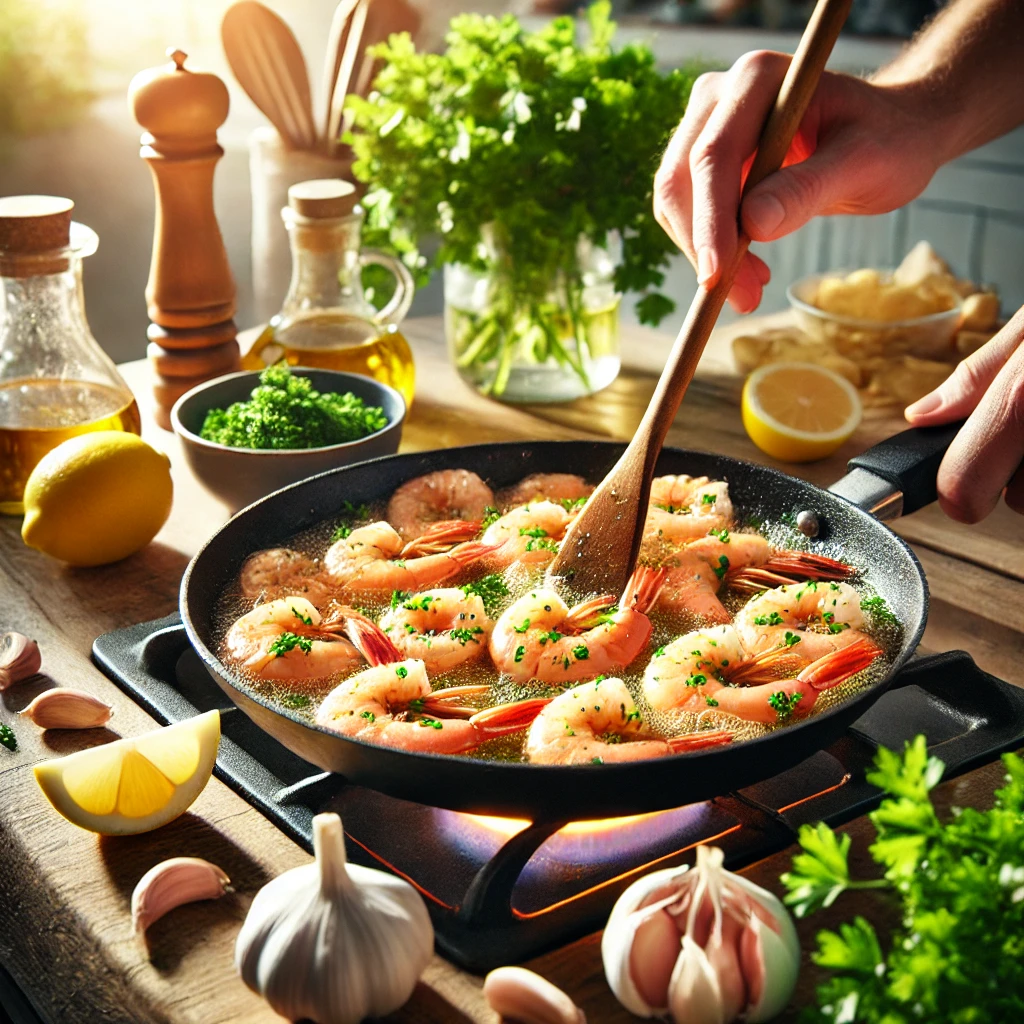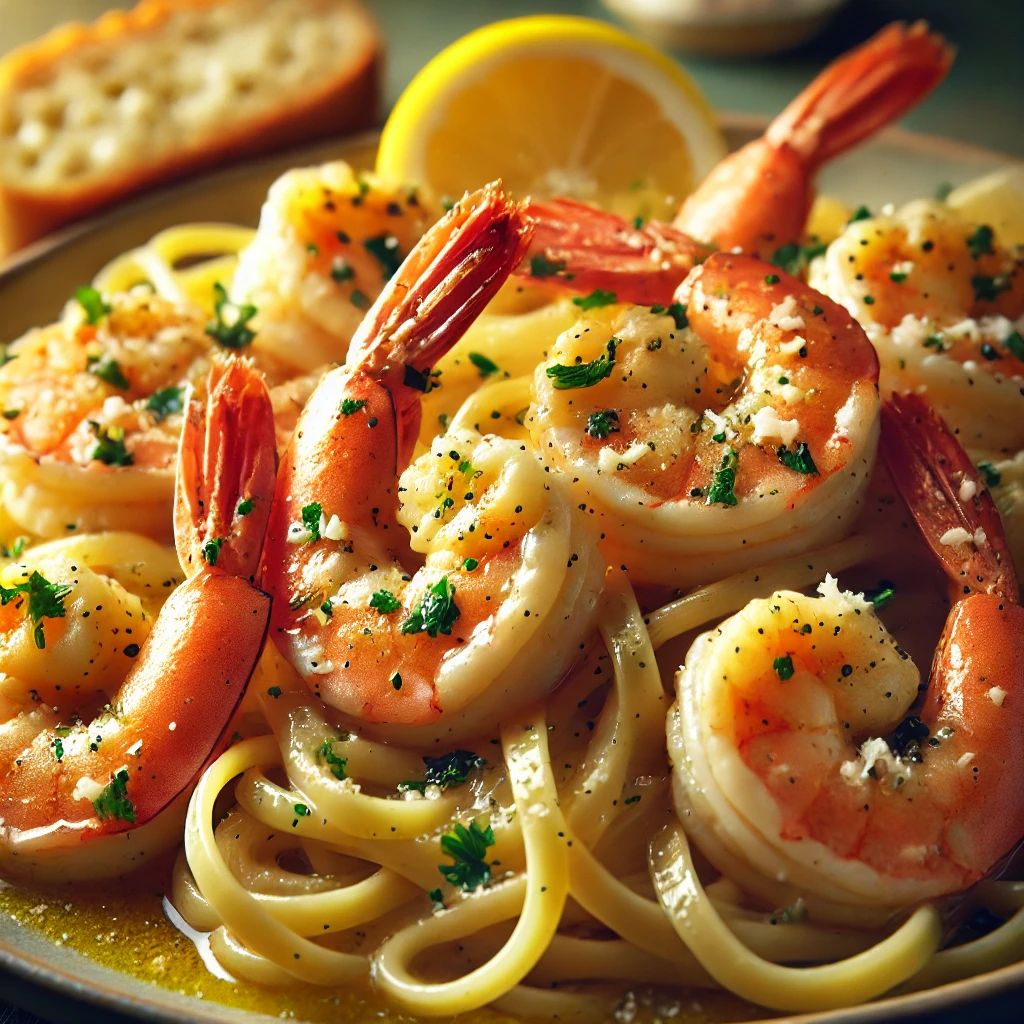Introduction
Shrimp Scampi is a dish that captures the essence of simplicity and flavor. With origins rooted in Italian cuisine, this dish has evolved into a popular choice for seafood lovers around the world. The name “Scampi” originally refers to a type of small lobster found in the Mediterranean, but in the United States, it’s commonly associated with the buttery, garlic-infused shrimp dish we all know and love.
In this comprehensive guide, we’ll walk you through everything you need to know about making the perfect Shrimp Scampi, from selecting the right shrimp to achieving the ideal balance of flavors. Whether you’re a seasoned cook or a beginner in the kitchen, this recipe will quickly become a go-to for weeknight dinners or special occasions.
The History of Shrimp Scampi
Before diving into the recipe, it’s interesting to explore the history of Shrimp Scampi. The dish originated in Italy, where “scampi” referred to a specific type of lobster that was prepared in a similar way to the modern shrimp version. Over time, Italian immigrants in America adapted the recipe using shrimp, as scampi were not as readily available.
The American version of Shrimp Scampi evolved to include garlic, butter, white wine, and parsley, creating a dish that is both rich and flavorful. Today, Shrimp Scampi is often served over pasta or with a side of crusty bread, making it a versatile and satisfying meal.
Ingredients for Shrimp Scampi
The beauty of Shrimp Scampi lies in its simplicity. The ingredients are straightforward, yet when combined, they create a symphony of flavors. Here’s what you’ll need:
For the Shrimp:
- 1 pound large shrimp, peeled and deveined
- 4 tablespoons unsalted butter
- 4 tablespoons olive oil
- 4 cloves garlic, minced
- 1/4 teaspoon red pepper flakes (optional)
- Salt and pepper, to taste
- Juice of one lemon
- 1/2 cup dry white wine (such as Sauvignon Blanc)
- 1/4 cup chopped fresh parsley
- Zest of one lemon
For Serving:
- 12 ounces linguine or spaghetti
- Freshly grated Parmesan cheese
- Crusty bread (optional)
Selecting the Right Shrimp
The key to a successful Shrimp Scampi lies in selecting the right shrimp. Fresh shrimp is always ideal, but frozen shrimp can work just as well if handled properly. Look for large shrimp, as they have a meatier texture that holds up well in this dish.
When buying shrimp, consider the following tips:
- Size: Larger shrimp, typically labeled as 16-20 count per pound, are perfect for Shrimp Scampi. They have a nice, substantial bite and are easy to manage in the pan.
- Freshness: If you’re buying fresh shrimp, make sure they have a clean, briny smell. Avoid shrimp with an ammonia-like odor, as this indicates they are past their prime.
- Frozen Shrimp: If using frozen shrimp, thaw them in the refrigerator overnight or place them in a colander under cold running water for about 15 minutes. Pat them dry before cooking to prevent excess water from diluting the sauce.
Cooking Shrimp Scampi
Now that you’ve selected your shrimp, it’s time to cook! The process is quick, so make sure you have all your ingredients prepped and ready to go before you start. Here’s how to make Shrimp Scampi step by step:
Step 1: Cook the Pasta
Start by cooking your pasta according to the package instructions. You want the pasta to be al dente, with a slight firmness to the bite. Reserve about a cup of pasta water before draining, as this can be used to adjust the consistency of your sauce later.
Step 2: Sauté the Garlic
In a large skillet, heat the olive oil and butter over medium heat. Once the butter has melted, add the minced garlic and red pepper flakes. Sauté the garlic until it becomes fragrant and lightly golden, about 1-2 minutes. Be careful not to burn the garlic, as it can become bitter.
Step 3: Cook the Shrimp
Add the shrimp to the skillet in a single layer. Season with salt and pepper. Cook the shrimp for 2-3 minutes on each side, or until they turn pink and opaque. Shrimp cook quickly, so keep an eye on them to avoid overcooking, which can result in a rubbery texture.
Step 4: Deglaze the Pan
Once the shrimp are cooked, remove them from the skillet and set them aside. Pour the white wine into the skillet to deglaze the pan, scraping up any browned bits from the bottom. Allow the wine to reduce by half, which should take about 2-3 minutes. This step adds depth to the sauce by incorporating the caramelized flavors from the shrimp and garlic.
Step 5: Make the Sauce
Reduce the heat to low and return the shrimp to the skillet. Add the lemon juice and zest, stirring to combine. If the sauce seems too thick, you can add a splash of the reserved pasta water to reach your desired consistency. Finally, stir in the chopped parsley.
Step 6: Toss with Pasta
Add the cooked pasta to the skillet, tossing it in the sauce until it’s well coated. If needed, add more pasta water to loosen the sauce. The pasta should absorb some of the sauce, enhancing the overall flavor.
Serving Suggestions
Shrimp Scampi is traditionally served over pasta, but there are several ways you can enjoy this dish:
- Over Pasta: Serve the Shrimp Scampi over a bed of linguine or spaghetti. Top with freshly grated Parmesan cheese and a sprinkle of parsley for a classic presentation.
- With Crusty Bread: Skip the pasta and serve the shrimp with a side of crusty bread to soak up the delicious sauce.
- With Vegetables: For a lighter option, serve the shrimp over a bed of sautéed vegetables like zucchini noodles or steamed asparagus.
- As an Appetizer: Shrimp Scampi also makes a great appetizer. Serve the shrimp on a platter with toothpicks, alongside a bowl of the buttery sauce for dipping.
Tips for Perfect Shrimp Scampi
While Shrimp Scampi is a relatively simple dish, a few tips can help elevate your dish from good to great:
- Use High-Quality Ingredients: Since this dish is all about the simplicity of the ingredients, make sure you use high-quality butter, fresh garlic, and a good dry white wine. These small details make a big difference in flavor.
- Don’t Overcook the Shrimp: Shrimp cooks very quickly, and overcooking can lead to a rubbery texture. Keep a close eye on the shrimp and remove them from the heat as soon as they turn pink.
- Balance the Flavors: The acidity of the lemon juice and the richness of the butter should balance each other out. Taste the sauce as you go and adjust the seasoning or acidity if needed.
- Add a Kick: If you like a bit of heat, don’t shy away from the red pepper flakes. You can also add a dash of hot sauce or a pinch of cayenne pepper to give the dish a spicy twist.
Variations on Shrimp Scampi
Shrimp Scampi is a versatile dish that can be adapted to suit your taste or dietary preferences. Here are a few variations you might want to try:
- Shrimp Scampi with Tomatoes: Add cherry tomatoes to the skillet when you sauté the garlic. The tomatoes will add a burst of sweetness and color to the dish.
- Creamy Shrimp Scampi: For a richer version, stir in a splash of heavy cream or a dollop of mascarpone cheese into the sauce before adding the shrimp back to the skillet.
- Garlic Bread Crust: Top your Shrimp Scampi with a crispy garlic bread crumb crust for added texture. Simply toast some breadcrumbs with garlic and butter, then sprinkle them over the dish just before serving.
- Gluten-Free Shrimp Scampi: Substitute the pasta with gluten-free pasta or zucchini noodles for a gluten-free version of this classic dish.
Conclusion
Shrimp Scampi is a dish that never fails to impress. Its combination of succulent shrimp, aromatic garlic, and rich butter sauce is pure comfort food that’s both elegant and easy to make. Whether you’re preparing a quick weeknight dinner or a special meal for guests, Shrimp Scampi is sure to be a hit.
By following this guide, you’ll have all the tips and tricks you need to create a restaurant-quality Shrimp Scampi at home. Remember to experiment with the variations and serving suggestions to find your perfect version of this classic dish.
So, gather your ingredients, roll up your sleeves, and get ready to enjoy one of the most delightful dishes in seafood cuisine. Bon appétit!








